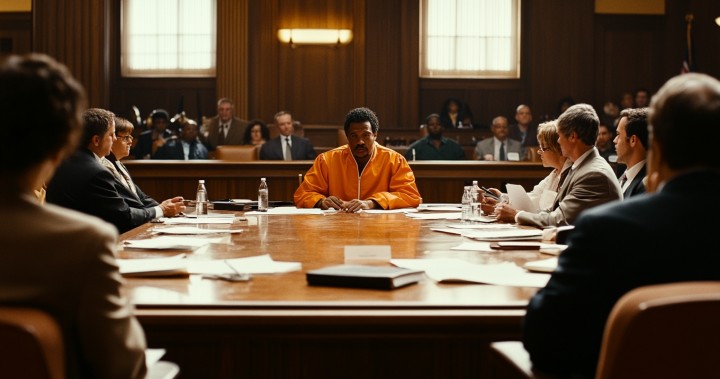Introduction
The Golden State Killer, a notorious serial killer and rapist, terrorized California from the 1970s to the 1980s. His capture and conviction brought a sense of closure to many victims and their families. This article explores his background, the breakthrough in his case, and his current status.
Who is the Golden State Killer?
Background: The Golden State Killer, also known as the East Area Rapist and the Original Night Stalker, was responsible for a series of brutal crimes, including at least 13 murders, 50 rapes, and over 120 burglaries across California.
Crimes: His crimes spanned from 1974 to 1986, involving heinous acts that instilled fear in the communities he targeted.
Nicknames: The Golden State Killer was known by several nicknames due to the geographical spread of his crimes and the different phases of his criminal activities.
The Capture of the Golden State Killer
Investigation
Initial Leads: Initial investigations were hampered by a lack of forensic technology and the elusive nature of the perpetrator.
Challenges: The case went cold for many years, with numerous dead ends and insufficient evidence to identify the killer.
Cold Case Status: Despite the efforts, the case remained unsolved for decades, haunting investigators and the public alike.
Breakthrough
DNA Evidence: The breakthrough came with advancements in DNA technology. Investigators were able to use DNA from crime scenes to create a genetic profile of the killer.
Genealogy Techniques: The use of genealogy databases, where individuals voluntarily submit their DNA for ancestry research, played a crucial role. Investigators matched the crime scene DNA with distant relatives of the suspect.
Key Moments: The pivotal moment came when investigators were able to narrow down their list of suspects, leading them to Joseph James DeAngelo.
Arrest
Details of the Arrest: Joseph James DeAngelo, a former police officer, was arrested on April 24, 2018, at his home in Citrus Heights, California.
Charges: He was charged with multiple counts of murder, rape, and burglary across several counties.
Legal Proceedings: The legal proceedings involved coordinating across various jurisdictions to consolidate the charges and present a comprehensive case against him.
Legal Proceedings and Conviction
Trial
Key Evidence: The trial relied heavily on DNA evidence, victim testimonies, and DeAngelo’s own admissions.
Prosecution Strategy: Prosecutors aimed to demonstrate the pattern and brutality of his crimes, linking them conclusively to DeAngelo.
Defense Arguments: The defense focused on procedural issues and sought to mitigate the charges, although the overwhelming evidence made this challenging.
Conviction
Verdict: In June 2020, DeAngelo pleaded guilty to 13 counts of first-degree murder and numerous other charges as part of a plea deal to avoid the death penalty.
Public Reaction: The guilty plea brought relief and a sense of justice to the victims and their families, many of whom had waited decades for this moment.
Impact on Victims: The conviction provided a measure of closure, though the emotional and psychological scars remain for many.
Sentencing
Sentence Details: In August 2020, DeAngelo was sentenced to life in prison without the possibility of parole.
Legal Implications: The case set important legal precedents regarding the use of genealogy in criminal investigations.
Final Statements: During sentencing, many victims and their families delivered impact statements, highlighting the lasting impact of DeAngelo’s crimes.
Current Status of the Golden State Killer
Health
Physical Condition: As of now, Joseph James DeAngelo is alive and incarcerated. Given his age, 78 years old (as of 2024), he faces typical age-related health issues.
Age-Related Issues: DeAngelo’s physical condition has reportedly declined, which is common for individuals of his age.
Prison Life
Location: DeAngelo is serving his sentence in a California state prison.
Conditions: He is housed under conditions typical for high-profile inmates, with heightened security measures.
Daily Routine: His daily routine involves limited interaction with other inmates, focusing on safety and security.
Potential Appeals
Legal Options: While DeAngelo has the right to appeal, his guilty plea significantly limits his options.
Likelihood of Success: Given the strength of the evidence and the plea deal, successful appeals are unlikely.
Future Prospects: DeAngelo is expected to spend the remainder of his life in prison.
Impact on Victims and Society
Victims’ Families
Closure: The arrest and conviction of DeAngelo brought a degree of closure to many victims and their families.
Ongoing Support: Various support groups and counseling services continue to help victims cope with the aftermath.
Memorials: Some communities have created memorials and remembrance events to honor the victims.
Legal Changes
Advances in Forensic Science: The case highlighted the potential of DNA and genealogy to solve cold cases.
DNA Databases: Increased public awareness and use of DNA databases have led to more breakthroughs in other cold cases.
Policy Reforms: The case has prompted discussions on privacy and ethical considerations in the use of genetic data.
Public Perception
Media Coverage: The extensive media coverage of the case brought national and international attention.
Cultural Impact: The case has been the subject of numerous books, documentaries, and podcasts, reflecting its profound impact on popular culture.
Continued Interest: Public interest in the case remains high, as it represents a significant achievement in criminal justice.
Conclusion
The Golden State Killer, Joseph James DeAngelo, is still alive and serving multiple life sentences in prison. His capture and conviction marked a significant moment in forensic science and criminal justice. The impact on victims, their families, and society continues to be felt, underscoring the importance of advancements in forensic technology and the relentless pursuit of justice.
FAQs
Is the Golden State Killer still alive?
Yes, Joseph James DeAngelo, the Golden State Killer, is still alive and serving multiple life sentences in a California state prison.
How was the Golden State Killer caught?
He was caught through the use of advanced DNA technology and genetic genealogy, which matched his DNA with that of distant relatives.
What were the charges against the Golden State Killer?
He faced multiple charges, including 13 counts of first-degree murder, numerous counts of rape, and burglary.
What is the significance of the Golden State Killer case?
The case highlights the importance of DNA technology and genealogy in solving cold cases and has influenced legal and forensic practices.
What impact did the conviction of the Golden State Killer have on victims?
The conviction provided a sense of closure and justice for many victims and their families, although the emotional impact remains significant.
Will the Golden State Killer be eligible for parole?
No, he was sentenced to life in prison without the possibility of parole.






